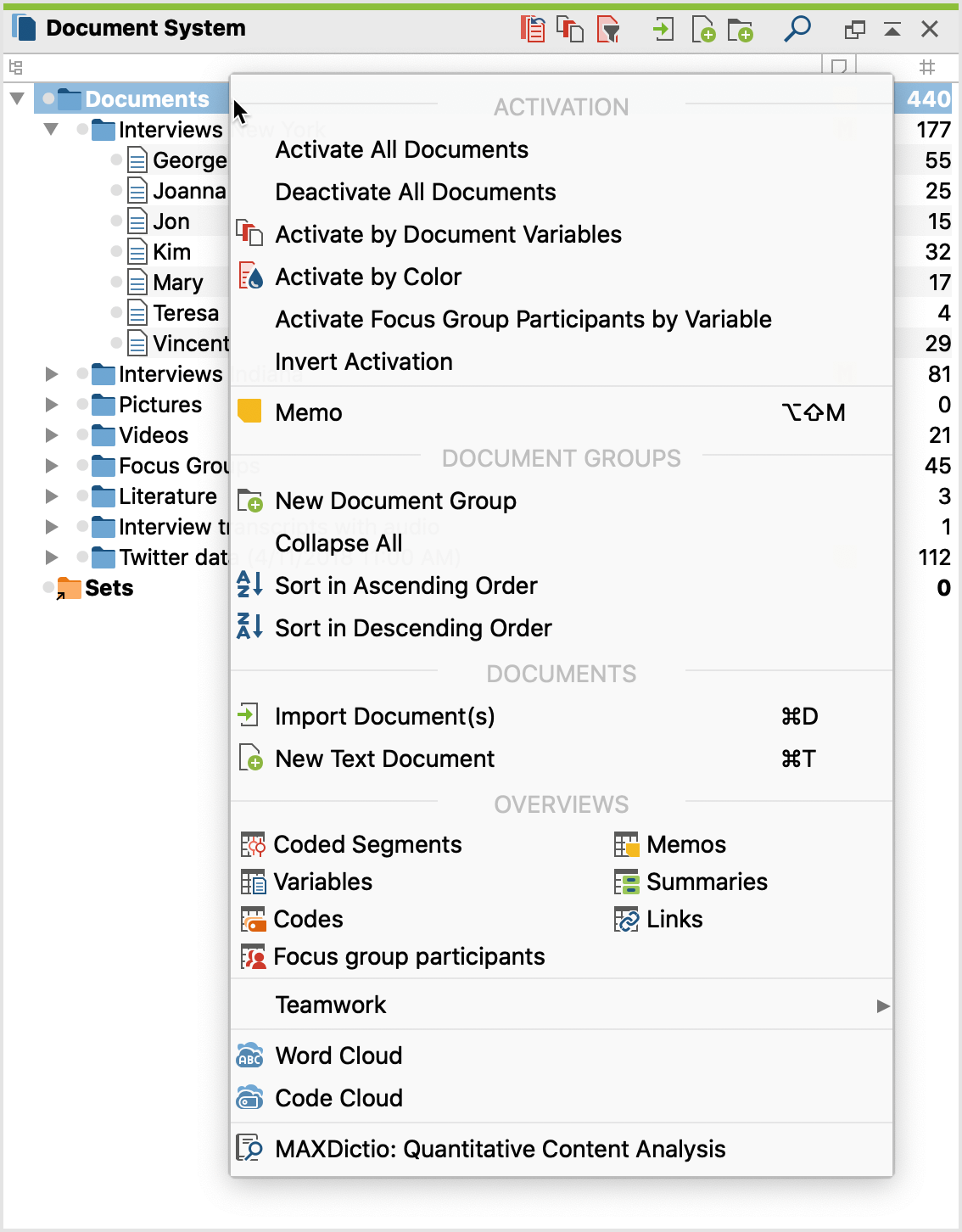Toolbar
The “Document Browser” is MAXQDA's main work window: This is where you can code text and images, write memos, link text and images together, add external links and more. The majority of the functions you will carry out in the “Document Browser” are available in the context menu, which you can access by simply right-clicking in the window. The most commonly-used functions are also available in the toolbar at the top of the “Document Browser.” It contains the following functions:
![]() Edit mode on/off – allows you to edit the text of a text or table document.
Edit mode on/off – allows you to edit the text of a text or table document.
![]() Print document – allows you to print the document displayed in the window, optionally along with memo symbols and coding stripes.
Print document – allows you to print the document displayed in the window, optionally along with memo symbols and coding stripes.
![]() Export displayed document – saves the open document in a location of your choice.
Export displayed document – saves the open document in a location of your choice.
![]() Display search toolbar – allows you to search within the open document.
Display search toolbar – allows you to search within the open document.
![]() Undock window
Undock window
![]() Maximize window
Maximize window
![]() Hide window
Hide window
Context menu
If you highlight a segment of text or select a section of a picture opened in the “Document Browser,” a context menu will appear with a large selection of various functions, if you right click on the selected segment.

Most of the available functions are self-explanatory, but they will still be explained quickly in the following section.
Code with New Code – codes the highlighted text or section of an image with a new code.
Code In-Vivo – codes the highlighted text with a new code created and named with the highlighted text.
Code with “xyz” – codes highlighted text or section of a picture with the most recently used code.
Code with Activated Codes – codes highlighted text or section of a picture with all activated codes in the “Code System.”
Insert Memo for Selection – creates a memo for the highlighted segment.
Search for Highlighted Text – opens the lexical search, with which you can search for the selected text in all or part of the project.
List Assigned Codes – displays the codes assigned to the selected segment.
Insert as New Document – adds the selected text or image excerpt as a new document at the top of the "Document System".
Convert to Line Numbered Text – cuts each line after a pre-defined number of characters into a new line, which will be treated as a new paragraph. Since this function changes the text altogether, it is only available in Edit mode. The function is not available for texts in read-only mode; the write protection needs to be disabled to use it.
Insert Document Link – sets an anchor for a link, which is a connection between two sections of a text or image.
Insert external Link – opens a file dialog to allow you to choose a file to be linked to the highlighted section of the text or image.
Insert Web Link – allows the insertion of a link to a website.
Insert Geolink – allows to insert a geolink; a file dialog will appear to open and import a KML file, that contains the geo information.
Remove link – deletes a link from the selected segment.
Cut – cuts the highlighted text from the document as in Microsoft Word.
Copy – copies the highlighted text as in Microsoft Word.
Paste – pastes the contents of the clipboard as in Microsoft Word.
Undo Text Changes – undoes the most recent change to the text (only works when in Edit mode).
Undo All Text Changes – undoes all changes to the text that have been done since Edit mode was turned on (only works when in Edit Mode).
Display Geolink Column – displays the geolink column next to the memo and code visualization column on the margin of the “Document Browser.” All geolinks are visualized with a symbol in this column.
Display Paraphrase Column – a column is displayed to the right of the document, showing the paraphrases of a text or PDF document. If the column is visible, the width of the comment column is also displayed in the context menu.
Display Comment Column – a comment column is displayed to the right of the document in which the comments on the encoded segments are displayed. If the column is visible, the width of the comment column is also displayed in the context menu.
